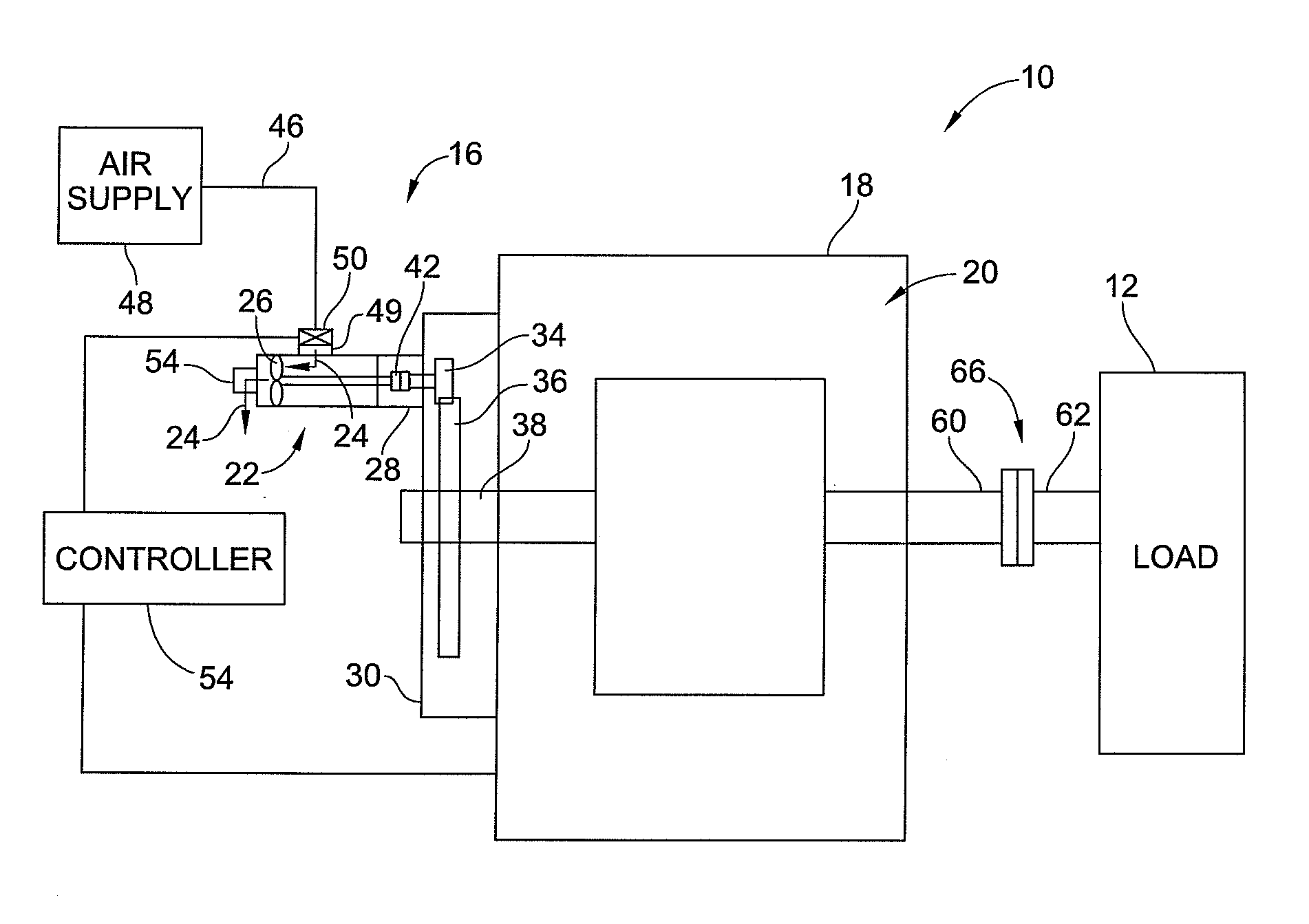Turbo-Pneumatic Assist for Electric Motor Starting
a technology of electric motor and assist device, which is applied in the direction of engine starter details, engine control, engine start-up, etc., can solve the problems of increasing the difficulty of employing proximate to communities or where facilities may be (more logically) needed, the use of fossil fuel based prime movers is becoming less and less attractive, and the effect of reducing the effect of electric motor acting, reducing the effect of inrush current and energy consumption
- Summary
- Abstract
- Description
- Claims
- Application Information
AI Technical Summary
Benefits of technology
Problems solved by technology
Method used
Image
Examples
Embodiment Construction
[0024]Referring to FIG. 1, shown in simplified form is an embodiment of a prime mover system 1O. The prime mover system 10 is operably coupled to and drives load 12. Load 12 can be any limiting load such as a compressor, a pump, a conveyor, a mill, grinder, etc. This list is not exhaustive or limiting and is provided by way of example only. The prime mover system 10 is an electric motor prime mover and includes an electric motor 18 for providing the motive power to drive load 12. As the prime mover system 10 includes electric motor 18 as the main source of motive power, the prime mover system 10 provides all of the ecological and maintenance benefits of an electricity based system. However, the embodiment of the prime mover system 10 beneficially eliminates many of the problems associated with using electric motor prime movers discussed previously. The prime mover system 10 eliminates or substantially reduces the problems associated with inrush currents and peak energy consumption d...
PUM
 Login to View More
Login to View More Abstract
Description
Claims
Application Information
 Login to View More
Login to View More - R&D
- Intellectual Property
- Life Sciences
- Materials
- Tech Scout
- Unparalleled Data Quality
- Higher Quality Content
- 60% Fewer Hallucinations
Browse by: Latest US Patents, China's latest patents, Technical Efficacy Thesaurus, Application Domain, Technology Topic, Popular Technical Reports.
© 2025 PatSnap. All rights reserved.Legal|Privacy policy|Modern Slavery Act Transparency Statement|Sitemap|About US| Contact US: help@patsnap.com



